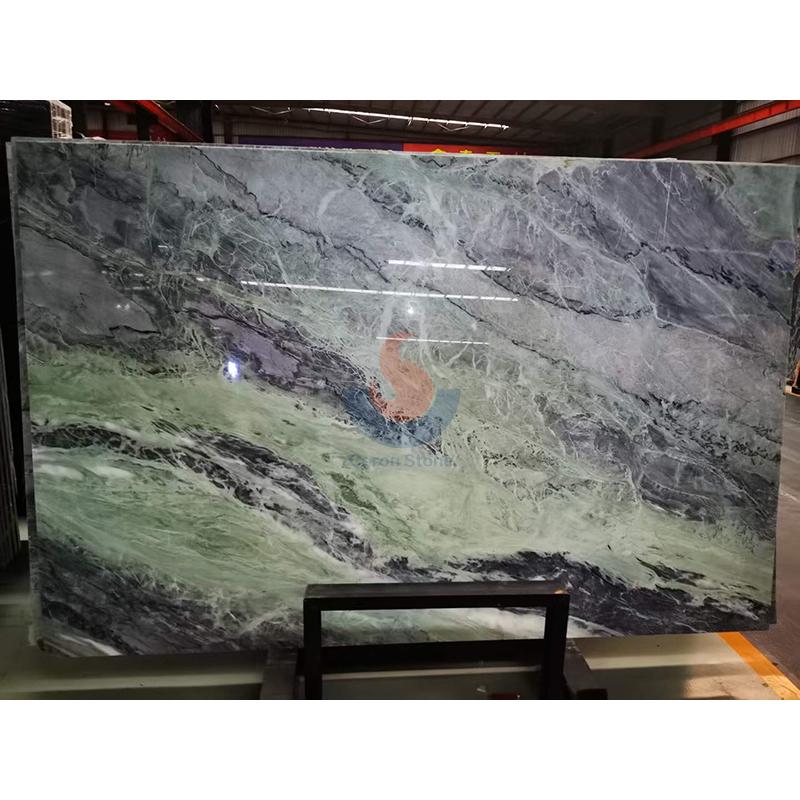In the world of interior design, the use of color is both an art and a science. Rich hues and natural textures of colored marble provide countless ideas for inside environments. Designers and owners must, nevertheless, find it difficult to combine these vivid hues with other components of the area to produce a harmonic and unique surroundings. This article will explore the strategies and techniques for balancing the colors of colored marble in interior design to help readers understand how to give full play to the unique charm of colored marble while maintaining the overall beauty of the space.

Real natural blue onyx marble stone slab and tile for wall and floor tile from China
1. Understanding color theory
Before considering how to balance the color of colored marble, you must first understand color theory. Achieving color balance starts with an awareness of color’s properties—such as hue, brightness, and saturation—as well as color matching techniques like complimentary colors, similar colors, and split complementary colors.
2. Determine the theme color of the space
Finding the theme color of the room is really crucial at the start of the design. One can utilize the color of colored marble as an auxiliary color, a theme color, or an embellishment color. This will direct the color matching and design orientation of the whole room.
3. Matching of colors and materials
To produce a rich visual impact from colored marble, it must be mixed with other materials. Warm wood accents, for instance, can balance chilly marble; metal or glass materials can give the room a futuristic impression.
4. Use neutral colors as transitions
Important components of interior design are neutral hues including black, gray, and white. Their ability to act as transitions between different colors helps to balance the whole color scheme by use of colored marble.
5. Control color proportions
Design depends mostly on managing the color ratios of different materials like colored marble. While other colors and materials occupy a bigger area, colorful marble can often be the main point—occupating a lesser proportion.
6. Use light to adjust color perception
The way one views color depends in great part on light. The color effect of colored marble can be modified to make it more harmonic with other elements by changing natural and artificial light sources.
7. Consider the psychological effects of color
Different colors can trigger different emotional responses. Design with regard for the psychological impact of colored marble colors and select color combinations that will evoke comfort and good feelings.
8. Use color contrast and harmony
Applying the ideas of color contrast and harmony can help you to produce a lively and balanced area. Colored marble’s vivid hues can accentuate other soft colors and boost visual appeal.
9. Personalized color selection
Each space and owner has its own unique personality and needs. The owner’s tastes and the purpose of the space guide the color of colored marble chosen and matched in the design.
10. Flexible use of color matching tools
Designers can use color matching tools, such as color wheels, color sample boards, etc., to experiment and determine the final color matching scheme. These instruments enable designers to more naturally grasp color relationships.

Bule Onyx marble slabs house contruction decoration
Balancing the color of colored marble with other components of the space in interior design calls for careful thought. Understanding color theory, choosing theme colors, fairly matching materials, controlling color proportions, using light adjustment, considering color psychological effects, using color contrast and harmony, personalizing color selection, and flexibly using color matching tools will help designers create an indoor environment that is both harmonic and unique. The color of colored marble is not only a decoration, but also a language that expresses the emotions and personality of the space. Colored marble can generate a lovely scene in the interior space with deliberate design and creative harmonizing.





